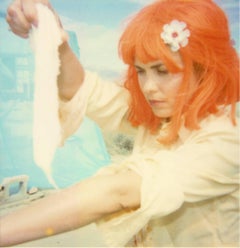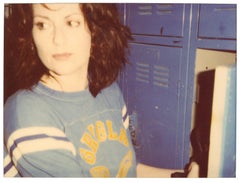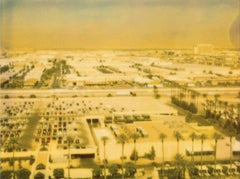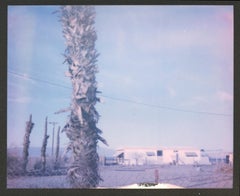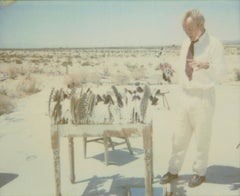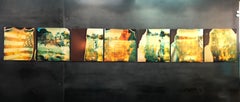Stefanie Schneider Art
Early 2000s Contemporary Stefanie Schneider Art
C Print, Color, Polaroid
Early 2000s Contemporary Stefanie Schneider Art
Archival Paper, Photographic Paper, C Print, Color, Polaroid
Early 2000s Contemporary Stefanie Schneider Art
Archival Paper, Photographic Paper, C Print, Color, Polaroid
2010s Contemporary Stefanie Schneider Art
Archival Paper, Photographic Paper, C Print, Color, Polaroid
Early 2000s Contemporary Stefanie Schneider Art
Photographic Paper, C Print, Color, Polaroid
Early 2000s Contemporary Stefanie Schneider Art
Metal
Early 2000s Contemporary Stefanie Schneider Art
Archival Paper, Photographic Paper, C Print, Color, Polaroid
Early 2000s Contemporary Stefanie Schneider Art
Archival Paper, Photographic Paper, C Print, Color, Polaroid
Early 2000s Contemporary Stefanie Schneider Art
Archival Paper, Photographic Paper, C Print, Color, Polaroid
2010s Contemporary Stefanie Schneider Art
Archival Paper, Photographic Paper, C Print, Color, Polaroid
Early 2000s Contemporary Stefanie Schneider Art
Archival Paper, Photographic Paper, C Print, Color, Polaroid
Early 2000s Contemporary Stefanie Schneider Art
Watercolor, Archival Paper, Photographic Paper, C Print, Polaroid
2010s Contemporary Stefanie Schneider Art
Archival Paper, Photographic Paper, C Print, Color, Polaroid
Early 2000s Contemporary Stefanie Schneider Art
Archival Paper, Photographic Paper, C Print, Color, Polaroid
2010s Contemporary Stefanie Schneider Art
Archival Paper, Photographic Paper, C Print, Color, Polaroid
1990s Contemporary Stefanie Schneider Art
Archival Paper, Photographic Paper, C Print, Color, Polaroid
1990s Contemporary Stefanie Schneider Art
C Print, Color, Polaroid
2010s Contemporary Stefanie Schneider Art
Archival Paper, Photographic Paper, C Print, Color, Polaroid
Early 2000s Contemporary Stefanie Schneider Art
Photographic Paper, C Print, Color, Polaroid
Early 2000s Contemporary Stefanie Schneider Art
Archival Paper, Photographic Paper, C Print, Color, Polaroid
Early 2000s Contemporary Stefanie Schneider Art
Archival Paper, Photographic Paper, C Print, Color, Polaroid
2010s Contemporary Stefanie Schneider Art
Metal
Early 2000s Contemporary Stefanie Schneider Art
Archival Paper, Photographic Paper, C Print, Color, Polaroid
1990s Contemporary Stefanie Schneider Art
Archival Paper, Photographic Paper, C Print, Color, Polaroid
2010s Contemporary Stefanie Schneider Art
Archival Paper, Photographic Paper, C Print, Color, Polaroid
1990s Contemporary Stefanie Schneider Art
Archival Paper, Photographic Paper, C Print, Color, Polaroid
2010s Contemporary Stefanie Schneider Art
Archival Paper, Photographic Paper, C Print, Color, Polaroid
2010s Contemporary Stefanie Schneider Art
Photographic Paper, C Print, Polaroid
2010s Contemporary Stefanie Schneider Art
Archival Paper, Photographic Paper, C Print, Color, Polaroid
Early 2000s Contemporary Stefanie Schneider Art
Archival Paper, Photographic Paper, Black and White, C Print, Polaroid
Early 2000s Contemporary Stefanie Schneider Art
Archival Paper, Photographic Paper, Black and White, C Print, Polaroid
2010s Contemporary Stefanie Schneider Art
Archival Paper, Photographic Paper, C Print, Color, Polaroid
Early 2000s Contemporary Stefanie Schneider Art
Archival Paper, Photographic Paper, C Print, Color, Polaroid
Early 2000s Contemporary Stefanie Schneider Art
Archival Paper, Photographic Paper, C Print, Color, Polaroid
1990s Contemporary Stefanie Schneider Art
Archival Paper, Photographic Paper, C Print, Color, Polaroid
Early 2000s Contemporary Stefanie Schneider Art
Archival Paper, Photographic Paper, C Print, Color, Polaroid
Early 2000s Contemporary Stefanie Schneider Art
Archival Paper, Photographic Paper, C Print, Color, Polaroid
2010s Contemporary Stefanie Schneider Art
Archival Paper, Photographic Paper, C Print, Color, Polaroid
2010s Contemporary Stefanie Schneider Art
Archival Paper, Photographic Paper, C Print, Color, Polaroid
Early 2000s Contemporary Stefanie Schneider Art
Metal
Early 2000s Contemporary Stefanie Schneider Art
Archival Paper, Photographic Paper, C Print, Color, Polaroid
Early 2000s Contemporary Stefanie Schneider Art
Archival Paper, Photographic Paper, C Print, Color, Polaroid
Early 2000s Contemporary Stefanie Schneider Art
Archival Paper, Photographic Paper, C Print, Color, Polaroid
Early 2000s Contemporary Stefanie Schneider Art
Archival Paper, C Print, Color, Polaroid
2010s Contemporary Stefanie Schneider Art
Archival Paper, Photographic Paper, C Print, Color, Polaroid
Early 2000s Contemporary Stefanie Schneider Art
Archival Paper, Photographic Paper, C Print, Color, Polaroid
Early 2000s Contemporary Stefanie Schneider Art
Archival Paper, Photographic Paper, C Print, Color, Polaroid
Early 2000s Contemporary Stefanie Schneider Art
Archival Paper, Photographic Paper, C Print, Color, Polaroid
Early 2000s Contemporary Stefanie Schneider Art
Archival Paper, Photographic Paper, C Print, Color, Polaroid
2010s Contemporary Stefanie Schneider Art
Photographic Paper, C Print, Color, Polaroid
Early 2000s Contemporary Stefanie Schneider Art
Archival Paper, Photographic Paper, C Print, Color, Polaroid
Early 2000s Contemporary Stefanie Schneider Art
Archival Paper, Photographic Paper, C Print, Color, Polaroid
Early 2000s Contemporary Stefanie Schneider Art
Archival Paper, Photographic Paper, C Print, Color, Polaroid
2010s Contemporary Stefanie Schneider Art
Photographic Paper, C Print, Color, Polaroid
Early 2000s Contemporary Stefanie Schneider Art
Archival Paper, Photographic Paper, C Print, Color, Polaroid
1990s Contemporary Stefanie Schneider Art
Archival Paper, Photographic Paper, C Print, Color, Polaroid
Early 2000s Contemporary Stefanie Schneider Art
Archival Paper, Photographic Paper, C Print, Color, Polaroid
2010s Contemporary Stefanie Schneider Art
Archival Paper, Photographic Paper, C Print, Color, Polaroid
Early 2000s Contemporary Stefanie Schneider Art
Plexiglass, Archival Paper, Color, Lambda, Polaroid
Early 2000s Contemporary Stefanie Schneider Art
Archival Paper, Photographic Paper, C Print, Color, Polaroid
